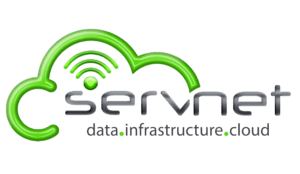Why Companies Are Moving from Cloud Back to On-Prem
With the rise of cloud computing, many companies jumped on board the trend and moved their operations to the cloud.
The benefits seemed endless – cost savings, scalability, flexibility, and more. However, in recent years, a growing number of companies are reversing course and returning to on-premise infrastructures. This may seem counterintuitive, but here we explore why companies are making the switch from cloud back to on-prem, and why it might be the smarter choice for your business.
1. Data Control
One big reason for companies moving back to on-premise data storage is the ability to have more control over their data. With cloud computing, businesses are entrusting their valuable data to third-party providers, and this can leave companies vulnerable to data leaks or breaches. By moving back to on-prem solutions, companies can have more control over their data security, and they can also ensure that the data is compliant with any legal regulations.
2. Latency Concerns
While cloud computing is great for some operations, it is not without limitations. One of these limitations is the issue of latency or the delay between sending data to the cloud and processing it. For businesses that require fast and uninterrupted delivery of data, latency can become a major problem. By moving back to on-premise solutions, businesses can ensure they have the low latency they need, especially with data-intensive processes such as video.
3. Cost Savings
While cloud computing can be cheaper in terms of upfront costs, there are often hidden costs involved. Some cloud providers can charge for services such as data transfers and network bandwidth, which can add up to significant costs over time. By moving back to on-premise solutions, businesses can save money in the long run as they will not be at the mercy of fluctuating cloud provider costs.
4. Customization
With on-prem solutions, businesses have more control over their IT infrastructure, and this includes being able to customize their hardware and software to meet specific needs. In some cases, businesses may require a specific set of tools or configurations that may not be available in the cloud or may require a lot of customization to achieve. Moving to on-prem solutions can save time and resources in this regard.
5. Performance
On-premise infrastructure by design has many benefits that help maintain peak performance. Servers within your organization can work in concert with other devices to optimize processing, analyze data requests and deliver results. This helps minimize downtime, reduces the workload on individual devices, and limits processing bottlenecks that cloud-based technology is prone to.
Conclusion
In conclusion, cloud computing has been a boon for many businesses, but it is not always the best option. For businesses that require a high level of control over their data, need lower latency, want the ultimate in customization, and desire a more predictable cost model, on-premise solutions might be the better option. Of course, this doesn’t mean that cloud computing shouldn’t be part of a business’s IT strategy, but rather that a hybrid approach might be the smarter option. By evaluating the pros and cons of both cloud and on-premise infrastructure, businesses can make a more informed decision about which will deliver the best outcomes for their particular needs.







